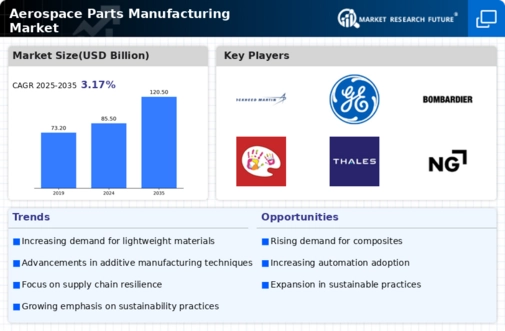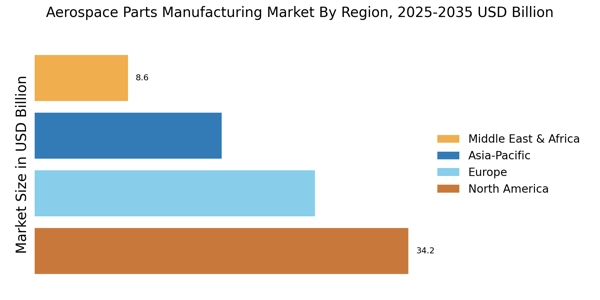The competitive landscape of the Aerospace Parts Manufacturing Market is characterized by a dynamic interplay of various factors, including technological advancements, regulatory compliance, and shifting consumer demands. As the aerospace industry experiences significant growth driven by the increasing global air travel, the demand for aviation parts and components continues to escalate.
This has resulted in a market that is not only competitive but also rapidly evolving, with key players leveraging innovation as a cornerstone of their strategies. Collaboration and strategic partnerships have become integral, allowing manufacturers to enhance their product offerings and streamline operations while adapting to changing market conditions.
The landscape features both established enterprises with strong brand equity and emerging contenders aiming to carve out their niche in this lucrative market. Analyzing the competitive insights offers a glimpse into how different players are positioning themselves to capitalize on current trends and meet the global demands effectively.
Lockheed Martin holds a prominent position in the Aerospace Parts Manufacturing Market, showcasing a solid presence characterized by technological expertise and innovation. The company's strengths lie in its extensive capabilities in defense and aerospace, which position it favorably in an increasingly competitive environment.
Lockheed Martin's well-established reputation for reliability and cutting-edge technology fosters trust among clients and enhances its competitive edge. The company actively invests in research and development, enabling it to stay ahead by optimizing product designs and manufacturing techniques.
This focus on innovation and superior engineering not only heightens its product offerings but also solidifies its place as a leader in the aerospace sector. Lockheed Martin's strategic partnerships and collaborations further bolster its market stance, allowing it to navigate the complexities of the Aerospace Parts Manufacturing Market with both agility and foresight.
General Electric is a significant player in the Aerospace Parts Manufacturing Market, known for its diverse portfolio and innovative solutions tailored to the aviation industry. The company offers a broad range of products, including jet engines, avionics, and other advanced aerospace components, positioning itself as a key contributor to global aviation.
General Electric's market presence is strengthened by its commitment to research and innovation, continuously upgrading its offerings to enhance performance and efficiency. The company has engaged in strategic mergers and acquisitions that enrich its capabilities and expand its technological horizons, further consolidating its market share.
Through targeted investments in emerging technologies and sustainable practices, General Electric not only addresses current market demands but also anticipates future trends in the aerospace sector.
This proactive approach, alongside its established reputation for high-quality products, plays a vital role in General Electric's sustained success in the competitive landscape of the Aerospace Parts Manufacturing Market.


















Leave a Comment